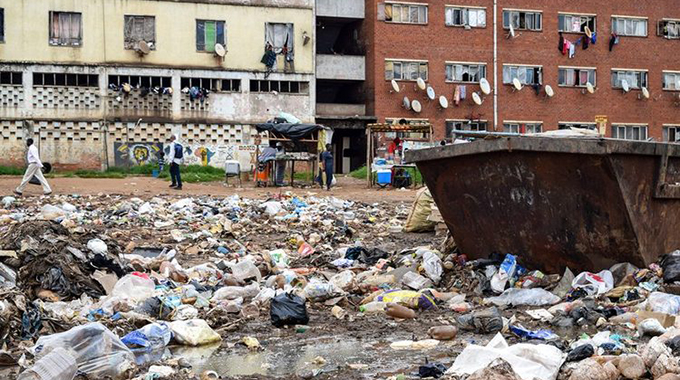Infrastructure: Albatross around local authorities neck

Pardon Gotora Urban Scape
It goes without saying that all urban local authorities are suffocating from inadequate and obsolete infrastructure.
The situation is not helped either by the incessant droughts experienced in the country as a culmination of the adverse effects of climate change.
Local authorities are mandated to provide services to residents. The bulk of the services they render are drawn from physical infrastructure.
This infrastructure comes in two forms.
There is off-site infrastructure, which comprises the bulk infrastructure for water extraction, treatment and transmission; sewer treatment and disposal; trunk roads and electricity sub-stations, among others.
Bulk infrastructure encompasses water sources, that is in the dams and rivers.
What quickly comes to mind in this instance are dams such as Lake Chivero commissioned in 1952 which, according to ZINWA, as at May 25, 2020, is 55,3 percent full.
Tugwi-Mukosi Dam commissioned in 2017 is 41,1 percent full while Umzingwane Dam commissioned in 1958 is 3,3 percent full.
Harava Dam commissioned in 1973 is 21,1 percent full, Kariba Dam commissioned in 1959 is 37,9 percent full and Lake Mutirikwi commissioned in 1961 is 38,7 percent full.
Looking at the dam levels, which are the major water sources for most of our urban local authorities, one is tempted to press the panic button, but we are only in June.
The scorching heat is yet to come in October/September and Umzingwane is already at 3,3 percent!
Bulawayo City Council is on record saying that the city’s dam levels remain critical and hinted to the Chronicle of February 14, 2020 that they had actually applied to Government to declare the city’s water crisis an emergency.
Declaring any situation a state of emergency opens the windows to potential development partners to chip in through resource leverage to avert the crisis.
We have repeatedly been advised by various authorities to “use water sparingly”, all culminating from the depleted water sources.
From the bulk water sources, comes the bulk water treatment plants and transmission systems.
The Morton Jaffray Water Treatment plant which supplies to the Greater Harare was built in 1953 for an estimated population of 300 000 people.
This is just a tip of an iceberg.
According to the 2012 Census by Zimstats, Harare Province has a total population of 2 123 132.
Compared to the 1953 estimates when the plant was designed and constructed, the population has increased by 14 percent.
However, the design capacity of the treatment plant is not commensurate with the demand for potable water for Greater Harare.
Frequent water cuts are not uncommon for Harare. Efforts have been channelled towards refurbishment and intermittent repairs of same, but repairs are interim measures.
There is need for completely new water sources and treatment plants, the likes of the Kunzvi Dam, which is one of the national priorities, provide the lasting solutions failure of which, service provision remains a nightmare for local authorities.
Water transmission from the treatment plants to the water reservoirs in different parts of the towns and cities require big diameter pipes.
Most of these pipes were laid at the time of the construction of the treatment plant. So their capacities are also limited to accommodate the volume pumped from the treatment plant.
Most of these are steel pipes that have since corroded and at times the segments are often found in tapped water that we drink.
The moment councils refurbish or expand the water pumping capacity, these pipes succumb to the increased pressure and water gashes out through weak points, hence frequent water bursts are experienced.
The same goes for on-site water infrastructure, which connects to individual homes.
The storyline is the same with wastewater treatment.
Bulk sewer collection and treatment works used in some local authorities include biological tutrient removal (BNR) and sewer ponds. The BNR removes nitrogen and phosphorus from the wastewater before disposal.
Most of these are obsolete.
As a result, local authorities have incurred huge costs treating water contaminated with raw sewage discharged into the main water bodies due to malfunctioning wastewater treatment plants.
The discharged effluent leads to the accumulation of sludge in the water bodies which maybe “cleaned” in times of good rains.
In old suburbs, residents have learnt to live in harmony with sewer bursts, and that explains why we have had cases of cholera outbreaks in areas like Budiriro in Harare.
The central business districts have been characterised by congestion because the roads were designed for fewer cars than what we have nowadays.
The roads are so narrow that there is no leverage to widen them. The buildings are so close to the roads that there is no room to manoeuvre.
Doing so would attract heavy compensation to the property owners and no local authority is endowed with adequate resources to compensate them.
This is the dilemma that most local authorities find themselves in.
They have tried to introduce one-ways, but as long as the roads intersect at some point, gridlocks are inevitable.
The bottom line is that, as a nation, we need to invest heavily in infrastructure provision, particularly off-site.
Adding housing units to the existing obsolete infrastructure exacerbates the situation.
It means that residents will continue to experience water shortages, sewer blockages, burst pipes and congestion.
This is the time that Government should hand-hold all the local authorities in service provision. However, this is not an attempt to exonerate local authorities from their shortcomings.
Feedback: [email protected]









Comments